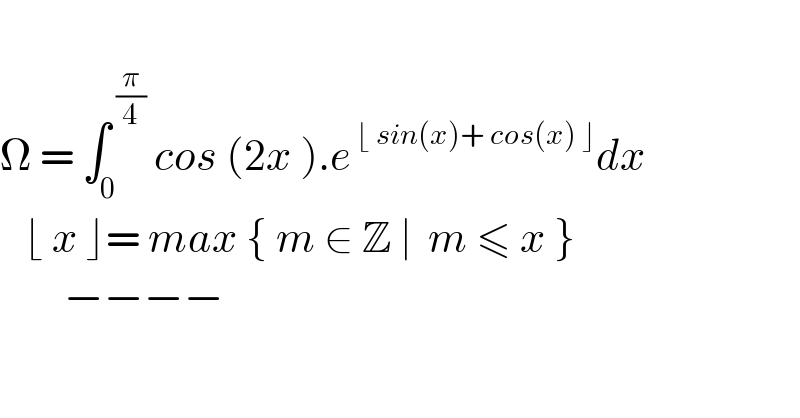
Question and Answers Forum
Question Number 165320 by mnjuly1970 last updated on 29/Jan/22

Answered by mahdipoor last updated on 30/Jan/22
![sinx+cosx=(√2)sin((π/4)+x)=A 0≤x≤(π/4) ⇒ 1≤A≤(√2) ⇒ ⌊A⌋=1 Ω=∫_0 ^(π/4) cos(2x).e^1 .dx=e[((sin(2x))/2)]_0 ^(π/4) =(e/2)](Q165336.png)
Commented by mnjuly1970 last updated on 30/Jan/22

| ||
Question and Answers Forum | ||
Question Number 165320 by mnjuly1970 last updated on 29/Jan/22 | ||
 | ||
Answered by mahdipoor last updated on 30/Jan/22 | ||
![sinx+cosx=(√2)sin((π/4)+x)=A 0≤x≤(π/4) ⇒ 1≤A≤(√2) ⇒ ⌊A⌋=1 Ω=∫_0 ^(π/4) cos(2x).e^1 .dx=e[((sin(2x))/2)]_0 ^(π/4) =(e/2)](Q165336.png) | ||
| ||
Commented by mnjuly1970 last updated on 30/Jan/22 | ||
 | ||